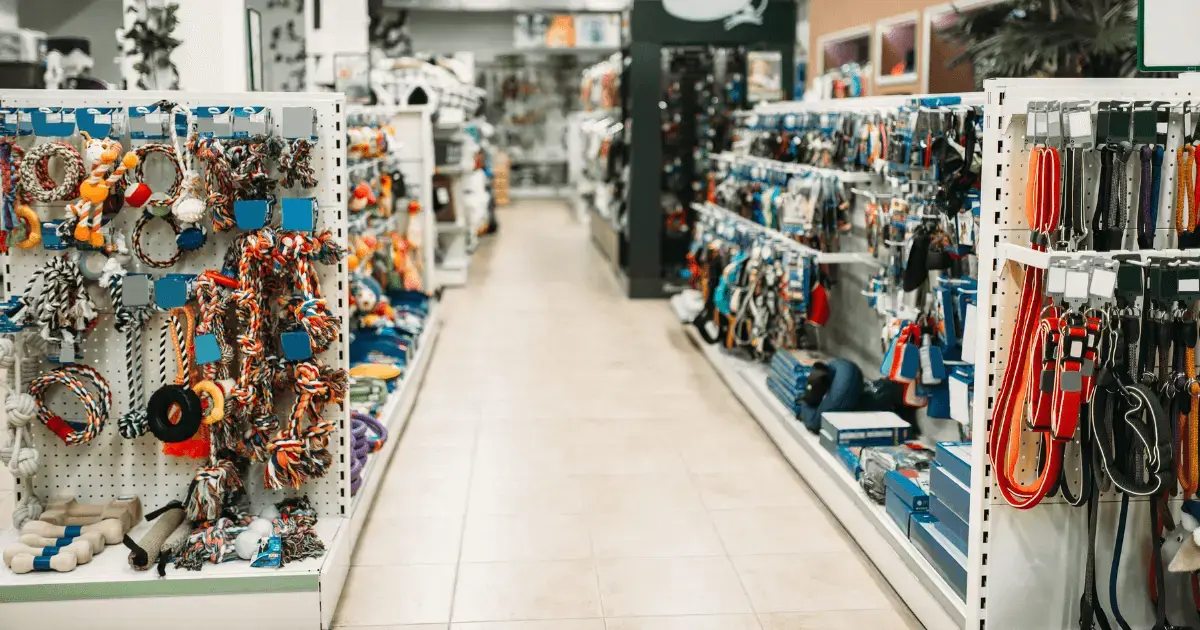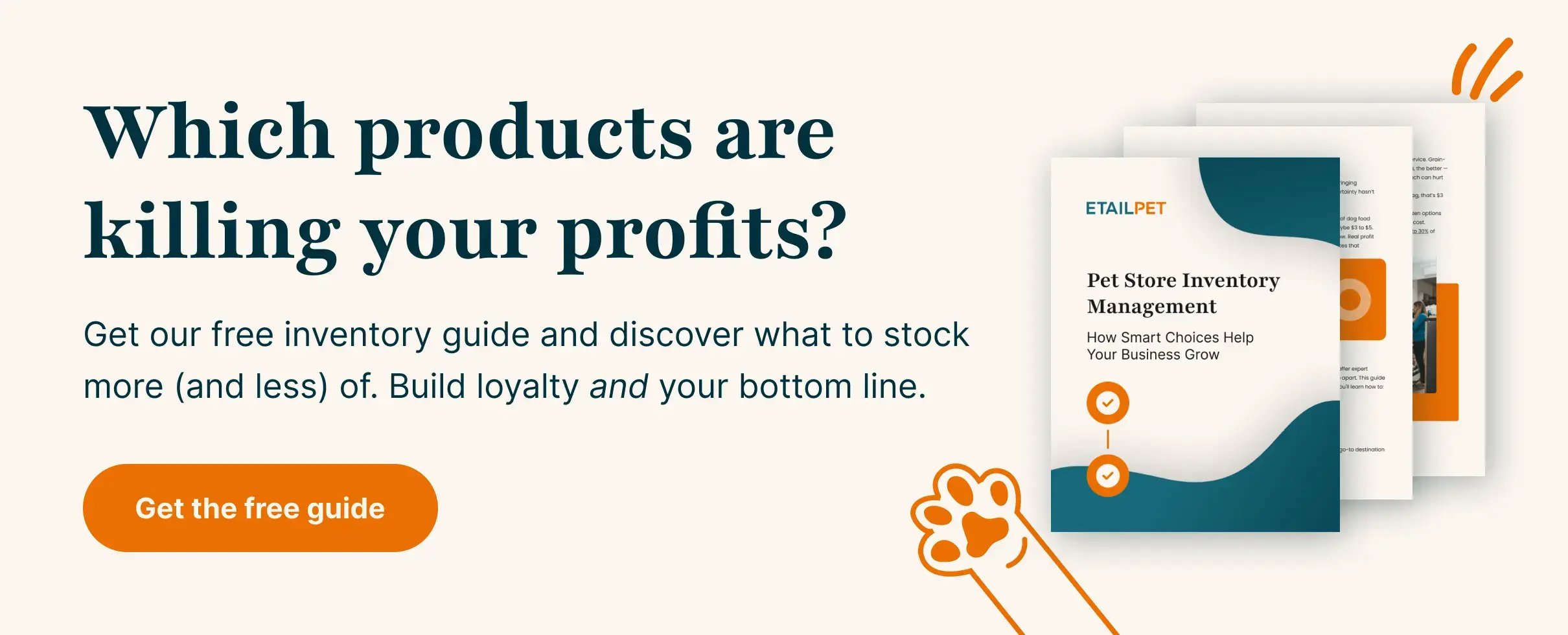
Imagine entering a pet store with wagging tails and purring companions, yet the chaos leaves you empty-handed and overwhelmed. For pet owners, your pet store layout isn't just about looks — you need to create a journey that's as delightful as it is efficient.
Let’s look at how easy it can be.
How Do I Prioritize My Pet Store Layout?
To effectively prioritize different sections of your pet store layout, consider the following strategies.
Identify High-Traffic Areas
Determine which areas of your store receive the most foot traffic. These are prime locations for placing high-margin or popular products, like dog and cat supplies, which are often top sellers in pet stores.
Reflect on what aspects of pet care you're most passionate about. This can be specific types of pets (e.g. dogs, cats, exotic animals) or specific services (e.g. grooming, nutrition, training). Your enthusiasm and expertise in these areas will help you prioritize the focus of your pet store layout and drive the success of your store.
Position Sections Strategically
Position key product categories at the front and to the right of the entrance, as studies show that 70–90% of customers naturally veer right when entering a store. This can include high-demand sections like dog food or cat litter.
You can also conduct market research to identify gaps in the local market and look for underserved niches like organic pet foods, pet fashion accessories, or specialized pet training tools.
You’ll want to analyze competitors to understand their offerings and find opportunities to differentiate your store.
Create a Logical Flow
Arrange the layout so that there’s a logical flow from one section to another. For example, place grooming supplies near the wash and grooming stations or pet food near items like bowls and feeders. You’ll guide customers through related products and increase the chances of cross-selling.
Look at the potential profitability of different focus areas. Some niches, like premium pet foods and wellness products, might offer higher margins compared to general pet supplies.
Highlight Seasonal and Promotional Items
Feature seasonal products or promotions in central or highly visible areas like end caps. This keeps your offerings fresh and encourages impulse purchases, especially during holidays when pet owners tend to buy gifts for their pets.
You can engage with the community to understand their preferences and build relationships. Based on the information you gather you can host holiday events or workshops to gather feedback and promote your focus area.
It’s also important to stay updated on seasonal pet industry trends, such as the growing demand for eco-friendly products or technology-driven pet care solutions.
Use Data To Inform Decisions
Start by leveraging sales data to identify bestselling items and prioritize these in easy-to-navigate locations. You can then use a point of sale (POS) system with robust reporting features to track and analyze which products perform best and adjust layouts accordingly.
With your POS solution in place, you can implement technology solutions like smart ordering and robust reporting to make informed decisions based on sales data and customer preferences.
This date will enable you to use digital marketing tools to reach your target audience effectively and highlight your specialization.
By following these steps, you can choose a primary focus that resonates with your interests, meets market demands, and sets your pet store up for success.
6 Ideas for Creating an Irresistible Pet Store Layout
A well-thought-out store layout not only enhances the shopping experience, but also plays a pivotal role in driving sales and building brand loyalty. From the moment a customer approaches your storefront, every element should work in harmony to create an engaging, enjoyable environment.
Here are six pet store layout ideas you can implement to improve your customer experience.
1. Focus on an Inviting Storefront
Your pet store’s story begins at the doorstep. Captivate potential customers with an inviting storefront that clearly communicates your brand. Use easy-to-read signage and creative window displays featuring a mix of big-ticket and everyday items. Balance is key — you want your store to appear well-stocked yet tidy from the outside.
2. Streamline Your Interior Layout and Organization
When they enter, guide your customers effortlessly with a clear, intuitive layout. Use large, overhead signs for each pet section, such as dogs, cats, birds, and reptiles.
Organize each section by category. For example, in the dog food aisle, categorize by life stage (e.g. puppy, adult, senior) and needs, grouping each brand’s offerings together. This systematic approach can boost your sales significantly.
3. Strategize Product Placement
Maximize the impact of your product placement with thoughtful end caps. These prime spots are perfect for bestsellers and seasonal items. Fun fact: Over half of dog and cat owners give their pets gifts during holidays — capitalize on this with themed displays.
Use open floor spaces with lower shelving to maintain visibility and avoid overcrowding.
Related Read: 5 Things To Know About Inventory Management Software for Pet Stores
4. Elevate Your Branding and Ambience
Use branding elements that create an inviting, inclusive atmosphere.
Start with the foundation: a strong logo and a deliberate color palette that extend across all visual aspects of your store, from signage to countertops and walls. This establishes a cohesive and recognizable identity. Then, thoughtfully incorporate elements within each section to infuse character and warmth. Make sure these playful touches align with the character of your pet store.
Properly executed branding differentiates your store and creates an environment where every customer feels welcome and engaged — this reinforces trust and connection with your pet store’s brand.
5. Optimize Checkout Area
Place impulse-buy items like treats and small toys near the checkout to boost overall sales. Make sure this area is clear of clutter and facilitates a quick, easy checkout process for customers.
By thoughtfully organizing and prioritizing sections in your pet store, you can improve the shopping experience, drive sales, and better meet the needs of your customers.
6. Integrate Your Online Experience
Incorporate digital elements to modernize the shopping experience. Consider in-store kiosks for product details or a seamless e-commerce platform that complements your physical store. This supports your customer experience and brings your business up to your customers’ online shopping expectations.
Create a dynamic and welcoming environment in your pet store by implementing these innovative pet store layout strategies.
Build Loyalty and Drive Sales With Your Pet Store Layout
Launching your new pet store layout may seem like a big task, but with a strategic plan, you can create an environment that’s inviting, organized, and uniquely yours. Remember: A well-thought-out store design is the foundation of customer satisfaction and business success.
eTailPet is an all-in-one point of sale (POS) system designed specifically for pet retailers, offering seamless technology solutions for your pet stores.
An easy-to-use POS system is also a must when it comes to running a successful pet business. Schedule a demo of eTailPet today to streamline your pet store operations.







 by Jared Slye
by Jared Slye

 by Taylor Harnois
by Taylor Harnois

